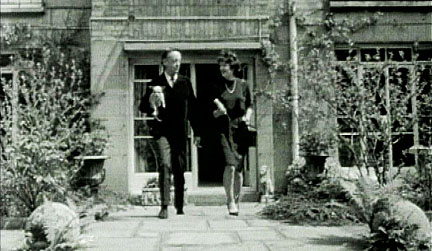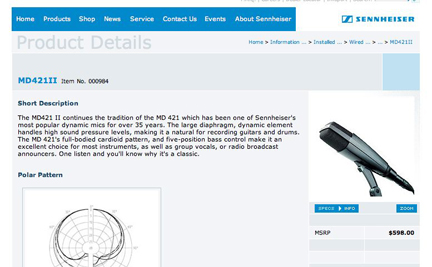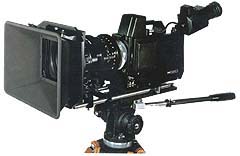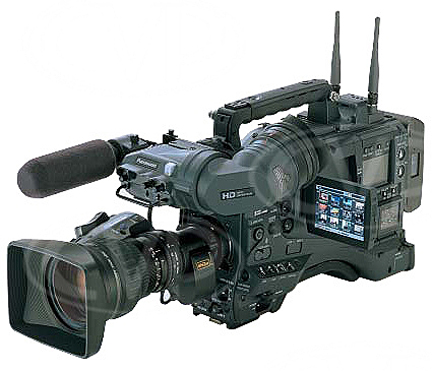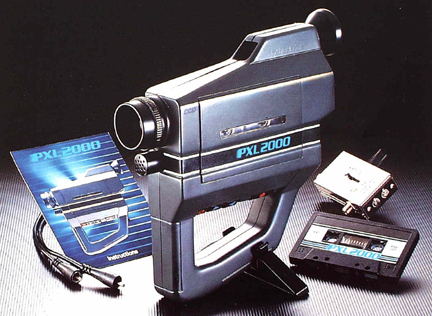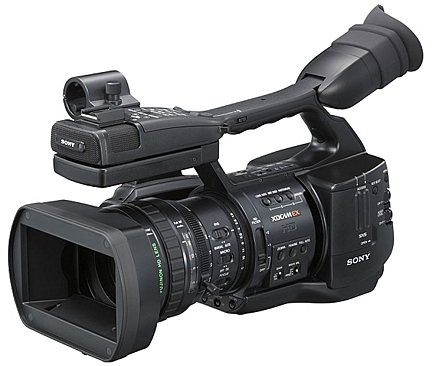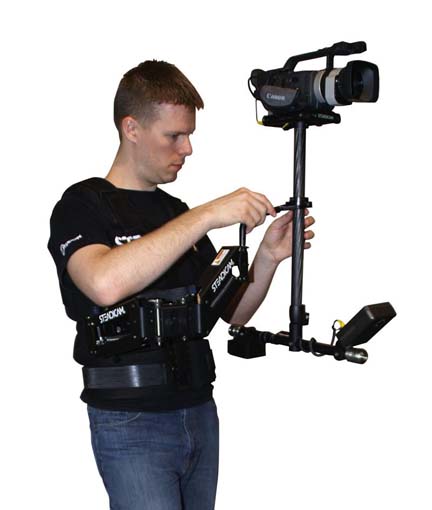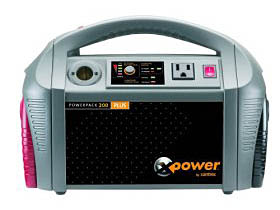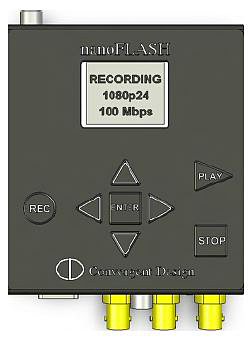Here’s a fun game you can all play. It’s called Obsolescence. No $200 on passing GO. More like losing $200 on every dice throw.
Bought an iPhone? You’re in the game — and doing badly. Come July 11, the new model iPhone will be $200 less than you paid for yours and full of great features that you haven’t got. What to do? Upgrade? Or do nothing and sob quietly as your friends show off their new iPhone. Cheer up, their new toy will be out-of-date real soon.
Take heart. There are Obsolescence winners. I’m one.
Here’s a frame grab from a 16mm documentary I shot in 1964. Wife #1 is holding a Sennheiser MD421 mike. And, guess what? Here we are in 2008 and it’s still a current model (the mike, not the wife). I bought mine 45 years ago for $50, and, unlike the iPhone, it has shot up in price. Will your iPhone still be working 45 years from now? Or worth more than you paid for it? Silly questions!
Out of sight is my 1964 Bolex 16mm camera — yep, you can still buy a new Bolex, exactly the same as my ‘64 model. And, again, it’s kept its value and still works. You can even buy the type of film stock I was using 40 years ago.
Your Sony EX1? Imagine it in 45 years. A museum piece.
I move forward three squares in the Obsolescence game. This is fun. I’m a winner!
Remember the 1982 Ikegami EC-35 “The World’s first Electronic Cinematography Camera”? EC stood for Electronic Cinematography and 35 for 35mm film. Yes, way back then, there was a video camera that had “the film look.” That was the hype. Not true. It looked like video and was obsolete a year later.
My friend Michael bought two and went bust. Michael, thank you for playing…
Obsolescence — that’s the name of the game!
Here’s a sad story I found on the Web. These guys at Underdog Pictures are shooting an on-spec doc about Wikipedia. Interviews with the Wiki founder, Wiki contributors — that sort of thing. The trailer is here.
They’re using a Sony $3,400 HVR-Z1U at 60i but hankering to upgrade to something better. So they dump the Z1 and get a $14,000 Panasonic HPX500 which records DVCPRO HD at 24pi. Happy? Nope. They want to up the ante again and upgrade mid-documentary to a $48,000 Panasonic HPX3000.
This puppy records using the AVC intra codec at a true 24p. Now they have convert their earlier stuff to the latest and greatest. Suddenly they need more disc space and a soon-to-be-out-date eight-core Mac. Ouch! Back four spaces!
The cautionary tale ends with the producers saying they “hope to show it at the 2009 Toronto Film Festival”.
My guess is that the Canadian festival folk won’t give a rat’s tooth whether it was shot on a $3,400 Sony, a $48,000 Panasonic or even a $100 Fisher Price. Content is always king.
Knowing festival audiences, a Fisher Price version would win hands down.
Obsolescence — that’s the name of the game!
And each manufacturer, they play it the same!
- Last year’s model, the Sony V1U.
At NAB 2007, you bought a Sony HDV V1U. Maybe a B&H Photo show special. Nice camera. Too bad, it’s out-of-date! The new Sony EX1 has a host of features that you don’t have. Upgrade at your peril because as sure as eggs is eggs, come next NAB there’ll be a newer, better version. (Oh, wait, there already is: The EX3!) Go ahead sell your V1 and buy an EX1. Now, move back two squares.
Next year’s EX camera will record at 50 and 100 Mbps against today’s EX1’s 35. The codec will move from 4:2:0 to 4:2:2. So why outlay cash on a product that will be out-of-date in less than 12 months? 2009 is only a few months away. But wait — the new 2009 models will be out-of-date in 2010.
Read the published V1U Vs. EX1 camera specs and you’ll quickly decide to upgrade:
2007 Sony V1U: 1,120,000 pixels
2008 Sony EX1: 2,073,600 pixels
Yikes! That’s twice as many picture elements. Quick, dump the V1 on eBay!
Dazed and confused, I turn to Adam Wilt, the source of all camera knowledge.
I love Adam. He remembers reading a 1986 article of mine called “Buying Obsolescence”. It was published in the Journal of The Royal Television Society, (which no one in the U.S. ever reads). Here’s Adam, 22 years later, quoting my ancient paragraphs over a Las Vegas breakfast at this year’s NAB. Even I had forgotten them. Adam is a Wiltapedia!
Q: Adam, does that mean that the EX1 is TWICE as sharp as the V1?”
A: The V1 and Z7 use diagonally-arrayed CMOS sensors, with either 1440×810 or 960×1080 photosites depending on how you look at it [Sony quotes both sets of numbers interchangeably], which effectively and with some considerable hand waving give you almost the same picture as the 1920×1080 photosites on the EX1/3’s sensors. Practically speaking, the images are 95% as good, with only some slight aliasing artifacts and reduced diagonal resolution to betray the oddball setup. In a side-by-side with a true 1920×1080 camera, I can see the difference IF there’s enough fine detail, carefully placed, to reveal the difference, but in most real-world situations they’re very hard to tell apart.
Wow. If Adam W. says that, I’m keeping my V1. For me, it’s a no brainer.
But, say you really, really wanted to upgrade from a 2007 V1U to a 2008 EX1, besides going back several squares in the game, you’d be about $8,500 out of pocket. Face it, you’ll need a few SxS cards, a matte box and shade, filters, extra batteries, that’s 10 grand. Less, I guess, $1,500 for your used V1U on eBay.
Now the crunch. After spending $8,500 are you really going to be making better looking movies? I doubt it.
My advice is: Do nothing. Sit on your hands. Spend the $8,500 on items that really will improve your videos.
Let’s assume there’s $8,500 unspent in the kitty. Here’s what I’d do: Buy a second camera. Go to eBay and buy that $1,500 Sony V1U from the poor sap who didn’t read this very blog.
The best way to avoid screw ups (I should know) is with redundant equipment. If a camera has water spilt over it (oh yes, it has happened to me twice) you simply pick up the dry one and carry on shooting.
Then there’s multicam shooting. I do it all the time. Lock one camera off on a wide shot, while with the second camera you shoot tight. Two cameras means you can shoot the subject and the interviewer at the same time. Two V1s will stay frame accurate over an hour — mine do, maybe because they were bought together.
Great. You now have two identical cameras plus $7,000 going begging. And you’re winning in the Obsolescence game. Move up three squares!
Next, think about ways to get some camera movement. A dolly, a crane and jib — why not a Steadicam Pilot at $3,800? Even better is the new Flyer LE. There’s a great demo by Steadicam inventor Garrett Brown here . You’ve got to see it. The demo has a strange, surreal quality with the faces in the store blurred out — one missed at the end — was the editor getting tired? You’ve got the money to buy the Pilot because you didn’t upgrade. Move up two squares!
Personally, I’ve always wanted a Polecam. But at $30K it’s a pipe dream for me.
Then I think, “What the hell, I’ll build one.”
Buy 20ft of carbon fiber tubing, buy some servomotors, find a local precision engineer, find a good RC (radio control) guy and I now have a fully RC home made pole camera.
I put Susie on it with either a Raynox 0.66 wide angle or the simply amazing Raynox DCR-FE180 fisheye. We mount it on the back of Tricia’s pickup with tie downs. I move up four squares. Exciting, isn’t it?
We’re now down to about $3,500 in the kitty. I’m assuming you have bought some wide angle attachments and a matte box and sun shade. You have, haven’t you?
You couldn’t do worse than buy some reflectors, a step stool and blackout aluminum foil. Maybe a good diversity radio mike or a rifle mike like an Sennheiser ME66/K6 with a good windscreen — just $500 at BHPhoto .
What about lights? I love my Alzo HMI here. Just $182 complete with a 150-watt lamp that’s the equivalent to a normal 800 watts and balanced for daylight at 5200ºK. I use it on location or for shooting inside daylight-lit rooms.
Couple the Alzo HMI with a Xantrex Powerpack 200 Plus here. Terrific for taking on location and shooting outside anywhere. I don’t know how long the internal battery lasts as it’s never died on me. The amazing thing is that it’s only $66.99 on Amazon complete with internal battery, jumper leads and a tube to inflate your tires or clean the camera lens. If it had been made for the film industry, this battery to 110 volt power unit would sell at over $1,000. Why there are 12 volt camera battery belts at $1,400 — but useless for flat tires. Buy two.
For $250 you have BOTH an HMI location light and a battery pack. Move up another two squares.
Since I already have the radio mike, HMI and so on, here’s how I’m spending my remaining $3,495: I’m getting a nanoFlash recorder#mce_temp_url# to attach to my Sony V1U output. With the nanoFlash, I’ll avoid HDV compression and get MPEG2 4:2:2 at 50 or 100 Mbps recording on a $135 32GB CF card.
I do a lot of greenscreen work. The 4:2:2 will give me better keying, that’s a given. And while the EX1 boys are shooting 4:2:0 at 35Mbps on their $850 SxS cards, I’ll be shooting 4:2:2 at 100Mbps on $135 CF cards. Across two cards, I can record 142 minutes.
So… resist the temptation to upgrade. I did and got a 20ft pole camera and a solid-state recorder instead. Game, set and match!
Obsolescence GAME OVER!
You’ve got to admit that I’ve saved you a small fortune. Either you have enhanced your shooting package or you’ve have saved enough money to rebuild the kitchen. A bottle of Pinot to the address on my site would be appreciated.

